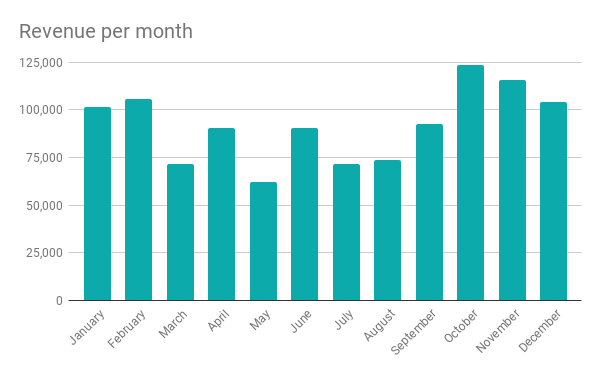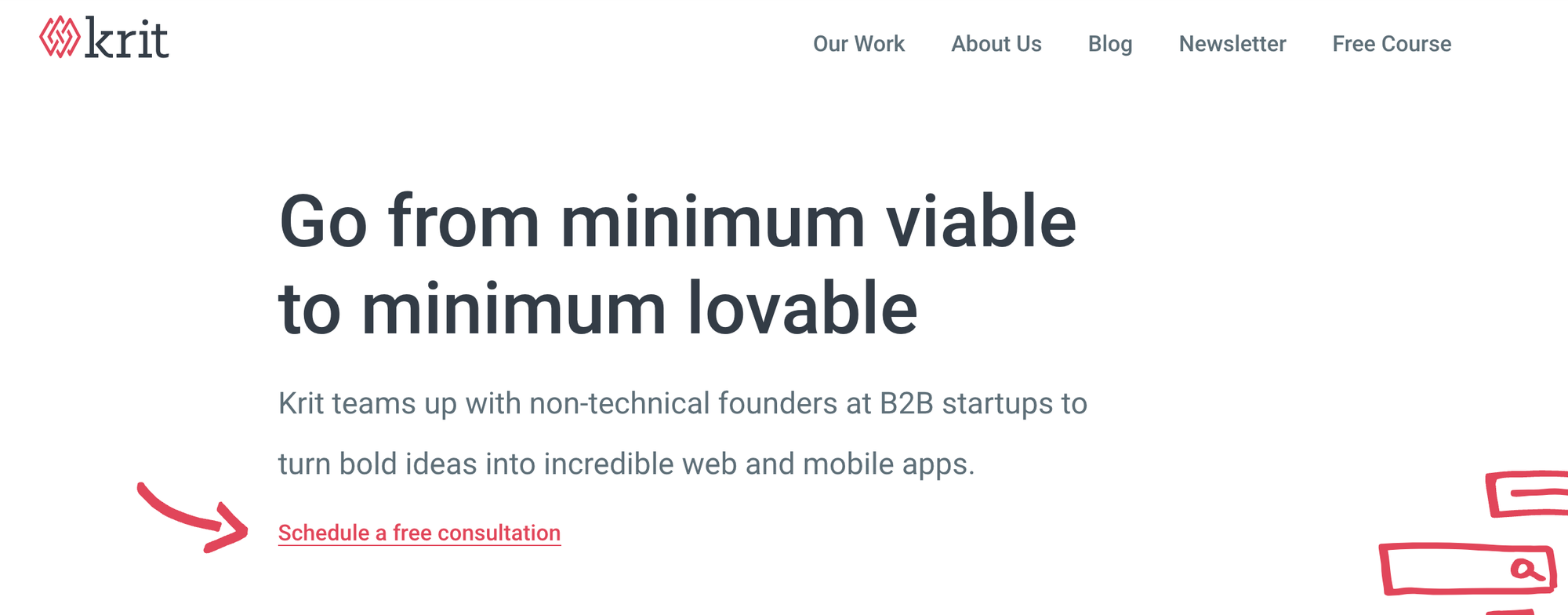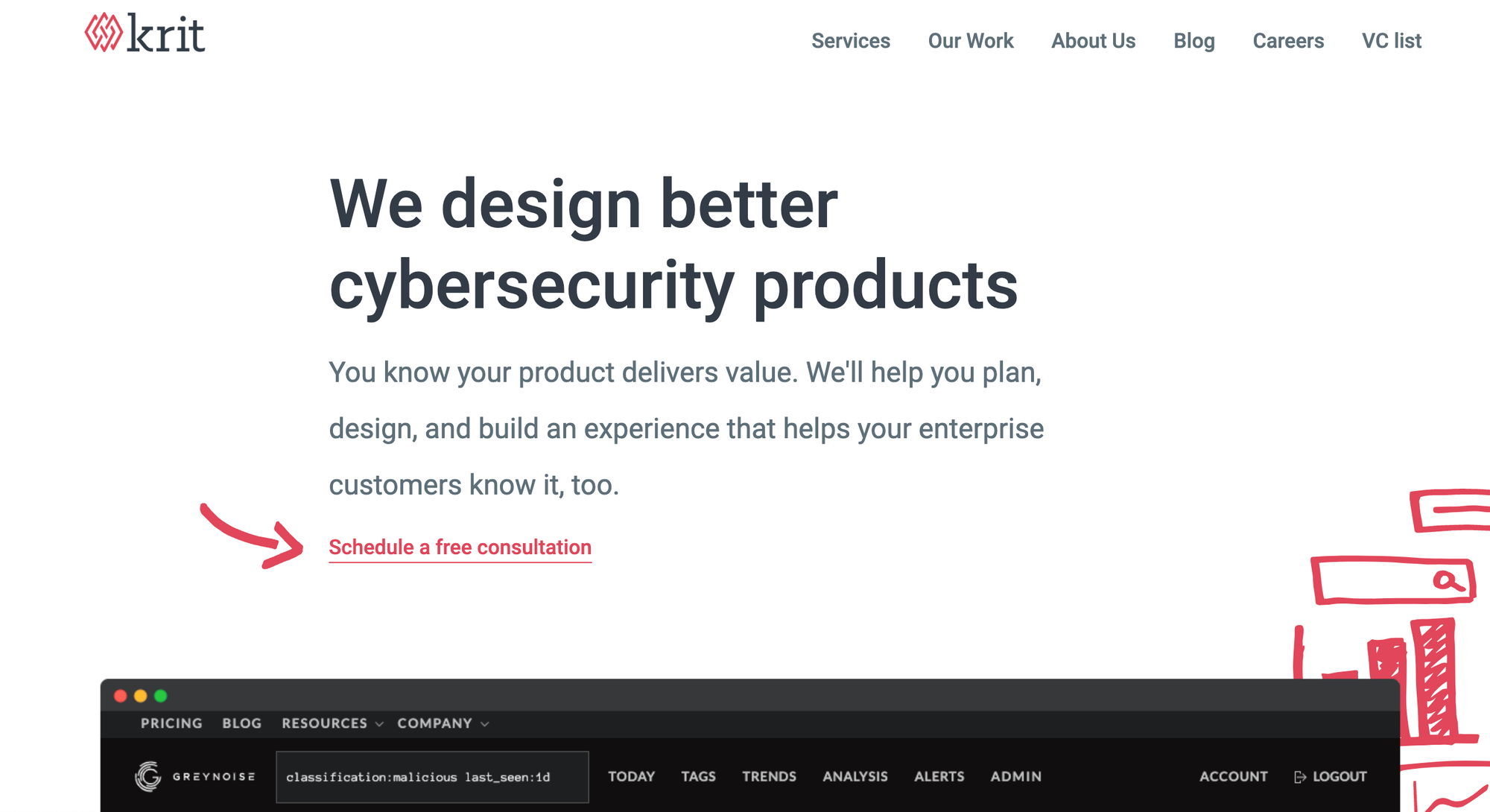Everything I learned building a million dollar agency
In June of 2022, I sold my agency. We crossed $1 million in annual revenue for the first time in the year before the sale.

It took us 8 years of growing the business to hit that million dollar milestone. In this post, I’m going to break down everything I learned about growing an agency business and what I would do differently next time.
In other words, how would I speed run my way to another million dollar agency?
Disclaimer: there’s always some survivorship bias in building a successful business. Sample sizes are small, and so we’re all making the best guesses we can based off the experience we have. This is what worked for me and most of the agency owners I know, but I’ve heard of others taking a different approach and making it work. I know that’s not as sexy to say, but it’s important to me to be transparent.
Agency marketing 101
Everything starts with positioning
If there’s one thing I want anyone reading this to take away, it’s that every part of your agency’s growth starts with your positioning.
Positioning is how you talk about your business compared to the rest of the market. It’s the set of strengths and weaknesses that you choose to highlight when compared to your competitors, the services you choose to advertise to new prospects, the projects you choose to put in your portfolio, and what you choose to include in your elevator pitch.
There are two types of agency positioning:
- Horizontal - like the Python vs JavaScript example above. You specialize in a set of skills or services but will work across multiple industries.
- Vertical - you specialize in a set of services within a specific industry, i.e. websites for real estate agents.
Typically, a vertical position is easier to grow. Clients and potential clients within the same vertical are more likely to know each other and be able to make referrals for you. You can also build domain knowledge that is typically highly valued.
I have seen exceptions to this. One exception was a former client, Ascent Solutions, an IT firm that built a strong partnership with Microsoft. Microsoft funneled them leads constantly, which was a huge advantage vs. insisting on focusing on a single vertical. Although they also built marketing materials around several of their most common verticals to make the sales process easier.
A valid approach to identifying a profitable vertical is to start with a broad, horizontal position. Then once you have several clients within the same industry, you can double down on that vertical.
At Krit, we started off as a generic dev shop, building websites, mobile apps, anything for anyone. Then over time we narrowed down to a horizontal position - app development for nontechnical startup founders. But we started getting more and more referrals for product design work with security companies.
Eventually, we pivoted to a vertical focus on product design for Seed-Series A cybersecurity startups. After that final shift, marketing got easier, word of mouth grew, and the business started to feel like it was really clicking. However, it’s a long, slow process.


If I were building another agency, I would try to identify a vertical to focus on where I had some connections or industry insight. You can always switch to a new vertical if that vertical isn’t gaining traction.
It’s also worth noting that many agencies will end up with a horizontal and vertical position. Product design is a horizontal position, while cybersecurity startups is a vertical position. I find this combination to be even better. It’s hard to get really good at a wide array of services, so focusing on a narrow subset of services with a vertical is the best way to build competency and word of mouth.
Also, don’t forget that you don’t have to include every client project in your portfolio. This is a piece of advice I got from another agency owner when I was struggling to decide on a position, for fear there wouldn’t be enough work. Many of the clients you will work with won’t ever look at your website or marketing materials. You can still take on work outside of your vertical if you need to pay the bills, although you should do so sparingly.
Note: for more information on positioning a consulting business read the books Business of Expertise and the Positioning Manual for Indie Consultants
Focus on referrals, not direct conversions
Once you have your positioning defined, you need to start getting the word out. But a common mistake I see is agencies try to directly convert website visitors, conference attendees, or social media users to clients.
If you’re building a product business, this is exactly what you should aim for. Some agencies make it work. But in my experience, most agency marketing is closer to brand awareness or audience building than it is to direct conversion-focused marketing. Agency purchases take a lot of trust, and the quickest way to build trust is through a referral (essentially borrowed trust).
I recommend focusing on growing your referral network instead of trying to convert the people you interact with directly to clients. When this is your focus, your marketing efforts shift in a subtle, but important way. An email subscriber, new partner (or friend), social media follower, or fan becomes the goal rather than a meeting scheduled. These goals are also typically easier to achieve, people feel less like you’re trying to sell them something, and more like you’re trying to build a connection.
You should still create bottom of the funnel content to support your sales cycle. However, the majority of your efforts should be focused on building trust and growing your network.
Networking + Content marketing + Doing good work = Growth
If I were growing an agency again, I would go to events in my network and start building relationships. Or even better, I would speak at, contribute to, or help organize events. I would also create a podcast, where I interview past clients and others like them in the industry.
I would then add everyone I met on LinkedIn. I would create regular LinkedIn content with advice centered around the services I offer, my process, industry commentary, and case studies from past clients.
I would periodically offer free resources to my LinkedIn network in exchange for subscribing to my mailing list. I would aim to publish a weekly newsletter expanding on the same types of content I post on LinkedIn, and including regular reminders that we are always open to referrals.
I would also make a more concerted effort to build partnerships with influencers in the vertical - think investors, coaches, or content creators. This might look like a special offer for their audience (this can work well with VCs), cohosting an event, having them on my podcast, or even in rare cases doing some free or discounted work for them in exchange for a case study and promotion to their network (I would use this last option VERY sparingly).

Cold outreach CAN work ONLY IF your positioning is dialed
The one exception I have is that cold outreach can work, but only if your positioning and service offerings are very, very dialed. Or you’re cheap, which you shouldn’t be (but more on that later).
When we started Krit, we were a dev shop for anyone and everyone. We got some leads through cold outreach to job boards, but only because we were cheap. Then, as we got more expensive and focused on a horizontal position, cold outreach stopped working at all. But once we dialed in our focus, cold outreach started to work again. Although our best clients continued to come in through referrals.
Agency sales 101
Be consultative
Once you start getting leads coming in the door, you need to close them. My number one piece of advice to anyone new to inbound sales for agencies is to be consultative.
When a prospect is on the phone, I ask hard questions and educate wherever possible.
Do you want to redesign your product? Cool, can you tell me where your current design is breaking down right now? What kind of feedback have you gotten from customers? Have you lost a deal to a competitor over product design? Are you trying to build MS Paint or Photoshop? Let me explain what I mean by that.
With this, you’re doing two things:
- Qualifying leads - no point wasting time on a lead who’s a bad fit. It’s better for both of us if I just refer them to someone who can help them more. I’ve referred people out before, and had them come back later when they were a better fit or even refer others to us.
- Building trust - by demonstrating my expertise and showing that I care about their success as much or more than I care about getting their business, I quickly build trust. And again, agency purchases are all about trust.
Build a pricing ladder
Another powerful tool for agency sales is to have a pricing ladder. The old adage always goes that it’s easier to upsell an existing customer than to close a new customer. That’s because again, everything is about trust and you already have trust built with your existing customers.
So you want to make it as easy as possible for someone to test the waters, learn they can trust you, and then spend more with you.
A pricing ladder is a set of services that gradually get more expensive.

At Krit, our introductory service was a Roadmapping Session for new products, or a Design Audit for existing products. We aimed for this service to cost 10% of a typical, larger engagement with us. We structured these so that several of the deliverables were valuable on their own whether you continued working with us or not, but the final deliverable was a detailed estimate and timeline for a larger project together.
We went a step further and required every customer to go through our intro service. This gave us a chance to vet customers and meant we didn’t have to waste time making proposals for prospects who weren’t ever going to become customers.
Another option is to make your standard service the lowest step on your pricing ladder, but restricted to 1-3 months of work. In this case you have a fixed budget and timeline but flexible scope. Then in the first week you refine the scope with the client into something that will fit within the given time, with options to expand after the initial work is complete. This is the model my friend Brian Casel uses for his consulting service One Month App and a model I’ve had success with in the consulting work I’ve done with Miscreants.
Be transparent with your pricing
Another tool for building trust with customers is transparent pricing. If you are transparent with your pricing, you immediately differentiate yourself, because so few agencies are.
Most agencies avoid sharing pricing information for fear of undercutting themselves, or scaring off a client if they give a low number and then realize the scope is much bigger later on.
For the first fear, if the price is high enough you will likely be happy even if you left some amount of money on the table. So start with a high price. And remember, you can always create a structure where the price increases based on the size of the company, speed of delivery, or other factors the client may value.
For the second fear, you can provide a range. However, clients will typically lock on to the lowest price in that range. Instead, I recommend tying the price to the scope, and refining the scope with the client as part of your process to fit (see the section above).
At Krit, our Design Audits were a flat fee of $15,000. I told clients that in the estimate we provided at the end, we would aim for our first deliverable to take no more than 3 months of work, at a cost of $120,000 (these numbers aren’t exact, but are in the ballpark I would provide). Additional months would cost $20k per FTE (full time equivalent).
In the proposal I delivered at the end of the Design Audit, I would often provide 2-3 options for scope including the 3 month option I quoted at the beginning, as well as a reminder that the client can continue working with us afterwards for a cost of $20k per month per FTE.
The sales flow
It took me years to figure out a sales flow that worked for us. Once we did, it helped to smooth out the process and again to demonstrate professionalism to potential clients. Copy this flow and tweak it, or make your own.
Intro call
The first call is focused on qualifying the client and getting them to agree to a second call. I’m not trying to close a deal yet, although I’m open to it if the client wants to move quickly.

Important qualifying questions:
- What is your budget? - pricing transparency is helpful here, clients hate to reveal their budget. It’s much easier to share your pricing and ask if that fits in their budget.
- What is your timeline? - often the answer is as soon as possible. Follow up by asking if there are any hard cut offs, events, promises to investors, etc.
- Is their project in line with the work we do best and where we want to grow our portfolio?
- Does their business make sense?
- Do they seem like they are interested in our expertise and willing to listen?
I typically try to keep this call to under half an hour. The first 15 or 20 minutes are spent asking questions, both to understand if we’re a good fit and demonstrate my expertise. I may offer an opinion or piece of advice, but I spend most of the call listening. Then I give them a brief spiel about our process, recommend we schedule a second call to dive deeper into our work, and ask if they have any questions for me.
Demo call / first close
In the second call, I lead the conversation more. I typically will pick 1-2 projects from our portfolio that match what they want to do as closely as possible, and walk them through the results we produced and the process we followed. Again, I give them a chance to ask any questions they have. After the call, I follow up with a one-pager outlining our process, our expertise, and how to get started.
Then I remind them of our process, and ask if they’re ready to move forward with an intro service. If not, I ask when I should follow up. If they’re a good client, I’d say it’s about 50/50 if they move forward or need a little more time.
If they are, then I send them discovery questions, an invoice, and a calendar invite to a kickoff call. I typically try to make the intro service small enough that we don’t need contracts yet, although this may change a bit depending on the approach you take.
Second close
After the intro service is complete, I schedule a check-in call. During this call, I gauge the client’s interest in continuing to work together on a larger project or an ongoing basis. This is where you grow the account and start to build real revenue.
Operations
Now that you’ve got leads coming in the door and you’re closing them, let’s talk about how to get the work done and make sure you’re generating profits not just revenue.
Use freelancers wherever possible
Downtime is the killer of agency profits. The vast majority (90%+) of your expenses every month as an agency will be people. If you’re paying for someone’s time, and aren’t generating revenue from that time, then your profits are taking a hit.
That isn’t to say you should work your team to the bone, or never have any downtime. In my opinion, there are things worth paying for that aren’t revenue generating, like team cohesion or internal management and strategy.
But having weeks or months where you have staff that aren’t on a project hurts.
The obvious solution is to leverage freelancers as much as possible. If you’re staffing projects with freelancers, you only incur costs when you also have revenue coming in. As long as you’re delivering on time and have project margins built in, then you are profitable by default.
The value and sustainability of your agency all comes down to profits. Agencies don’t have the luxury of VC dollars to prop up a broken business model. If you want to weather an industry downturn or project misfire you have to be profitable. If you want to earn enough as an owner to justify the time and stress you’re taking on, you have to be profitable. And if you ever want to sell your agency, you will almost certainly sell for a 2-5x EBITDA, not revenue.
Staffing entirely with freelancers has downsides. You don’t have first rights to their time, so if they take on another project when you need them you may have to scramble to find someone to do the work. Team culture and cohesion can also be harder to build with a team of freelancers than a full-time team. But the more you can leverage a team of freelancers, the easier it is to keep your margins healthy.
Don’t over deliver
Chances are you got into the agency business because you like creative work. Whether it’s design, marketing, engineering, or anything else you find it interesting. And if you’ve grown at all, it’s at least in part because you have taste and standards, which have helped you build a strong portfolio.
This makes it incredibly easy to get caught in a vicious cycle of perfectionism with client deliverables, constantly polishing and trying to get everything just right. So you throw in a few extra hours of work that you didn’t originally plan for. Because you don’t want to have to negotiate a scope change with the client, you just chalk it up to good service.
Remember, shipping is a skill too, and often the more important skill to the client. You have to have a great sense of where the line is for good enough, and be willing to cut the work off there. Otherwise you’re killing your margins.
If unbooked time is the first killer of agency profits, the second is overdelivering.
If you find yourself doing extra work that the client wouldn’t want to pay for if you charged them, stop. They hired you to get the job done better than they could do it themselves, yes, but more importantly they hired you to get it done.
The occasional nit picky client will ask for a million revisions and want everything to be perfect. They are a bad client, so fire them.
Know your standards and stick to them, but don’t build bad habits of going overboard when you don’t need to. Chances are the client won’t notice or appreciate the difference. You’re not catering to other creative agencies, you’re doing work for a business that needs to make progress.
Project Management and Account Management are two different hats
Clients will notice bad account management and project management way faster than they notice bad creative work. So it’s important you understand both roles, and how to do both well.
Note: I learned most of this from reading and working with David Baker and then seeing it in practice.
Project managers are the traffic managers of your agency. They know all the major deadlines that need to be hit, how much capacity everyone in the business has, when a team member is feeling overworked or isn’t pulling their weight, margins on every project and how those impact overall business margins, and where the bottlenecks are. They are experts at streamlining processes, getting the most out of the team while protecting their time and well being, and keeping things functioning smoothly.

Account managers are relationship builders and high-level thinkers. In small agencies, they often provide strategic input on projects. They’re constantly looking for opportunities to grow their accounts, and tend to think they can take on anything. They know the client’s goals, fears, and desires and are experts at handling client conflict. Left unchecked, they can create messes, but they are also the growth engine for your business.
Of course, it isn’t always done this way. In the early days, you or your team members will likely be doing both, so it’s important to understand where the boundaries are and when to wear which hat. Some teams do find success while continuing to combine both roles into one. But some people are better at one or the other, so eventually I recommend having dedicated people for each.
Charge more, WAY more
The most profitable agency owners I know are at least partially sickos. They will enter a negotiation with a new client and quote a massive number without blinking. Charging more will make up for a lot of other inefficiencies in your business, and if you’re not going to go the cheap labor, productized factory route, then its a requirement to building a really great agency business.
You can charge so much more than you think, especially if your positioning is dialed in. Clients place an enormous amount of value on getting things done, by an expert they trust, so that they don’t have to worry about it anymore (and have someone to blame if it goes wrong).
My best advice for finding the right rates to charge for your position is to increase your prices by 10-20% for every new client. Do this until you stop closing deals, and then adjust back down or find a way to target higher value accounts.
Strategy > Implementation
Another key to building a profitable agency that can charge a lot and justify it is to focus on strategy work over implementation work. Strategy work is generally higher leverage. It’s easier to justify spending $1000 an hour for 5-10 hours per month, than $250 for 160 hours per month. It’s also harder to compare strategy work to other employees, freelancers, and agencies.
Most likely, you will offer some combination of strategy and implementation work. It tends to be easier to find clients who are looking for implementation help, especially as you are building your name as an expert. You might consider employing Strategic Account Managers full time and outsourcing the implementation work to a stable of freelancers.
One of my favorite agency businesses is OGM, my friend’s SEO agency. He works exclusively with high growth SaaS companies that are Series B or later in funding. His team provides SEO analysis and strategy, and clients’ internal teams are responsible for implementation.
Another friend ran a product consulting business that specialized on project recovery. He would find founders who had tried to outsource product development to an agency, only to have the agency drop the ball. He charged a flat fee for product strategy and project management, and then helped the founder hire freelancers to do the implementation work who then billed the founder directly.
Separate time from money as much as possible
In general, the farther away from selling time directly that you can get, the more profitable you will be and the easier it will be to manage client expectations. Most clients would much rather pay for $100k for a fixed fee project than $250 per hour for a project with an estimate of 300 hours, even if the latter should be cheaper in theory. You also avoid having to share time tracking reports with clients and haggling over how much time you spent on something vs how much time they think it should have taken.

Still, fixed fee projects can be risky and value based pricing can be difficult to get right. When you’re starting out, the simplest thing to do is to use a daily, weekly, or monthly rate. You are still selling your time, but you are looking at it from a higher level. And in the end, most high-value projects are measured in weeks or months anyway.
Conclusion
If I were trying to grow a new agency to $1M+ in revenue while staying as profitable as possible, I would follow this advice:
- Test one or more vertical positions until I find one that resonates.
- Focus my marketing efforts on growing my referral network rather than direct conversions.
- This would likely look like a combination of in-person networking, networking via podcast interviews, and organic LinkedIn content that funnels to an email list with weekly emails sharing my process and industry insights.
- Be consultative in my sales approach.
- Build a pricing ladder, starting with an introductory service offer that has the potential to grow 10x or more into larger or ongoing services.
- Be transparent with my pricing.
- Use freelancers wherever possible.
- Avoid over delivering.
- Aim to eventually have separate project and account managers.
- Continuously test higher prices and more favorable terms.
- Focus on strategic services over implementation services.
- Start with a weekly or monthly rate and then work towards fixed fee or value based pricing.
If you have questions about something I didn’t cover, email me at andrew@discoshrimp.lol. I love talking through agency growth and operations, and would love to continue to add to this to make it a valuable resource for new agency owners.
If you enjoyed this, join my newsletter Founder Tonic, where I send out monthly emails with content on building bootstrapped startups, original essays, and content that’s just fun.
And for more reading, here are a few of my favorite sources/experts on growing an agency business. These folks helped me form the thoughts in this essay, I owe a lot to all of them.
- Two Bobs Podcast with Blair Enns and David Baker
- The Business of Expertise by David Baker
- Win Without Pitching by Blair Enns
- The Positioning Manual for Indie Consultants by Philip Morgan
- How Clients Buy by Tom McMaking and Doug Fletcher
- The Bureau of Digital
- Peter Kang's Agency Journey
